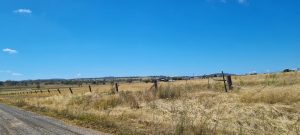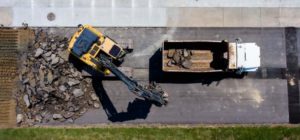Landowners on larger parcels may be able to subdivide their lot to create two smaller lots. The increased cost of housing might make a smaller lot attractive to people looking to do less maintenance or downsize.
Brisbane City Council allows different lot sizes dependent on your zoning and how close you are to “centres”, which are amenities like shops. You can look up your property’s zoning using the City Plan’s interactive mapping tool.
As a guide, small lots in the low density residential, character residential and low-medium density residential zones range from as low as 180 square metres up to 400 square metres. Council also outlines minimum lot size for a rear versus front lot, as well as minimums for average width and lot frontage.
The requirements are quite variable depending on the site’s zoning. For example in the Low Density Residential Zone generally the smallest lot allowed is 400 square metres and the rear lot must be at least 600 square metres. However if your site is within 200 metres (walking distance) of a “centre” zone with a combined site area of more than 2,000 square metres the minimum lot size can reduce down to 300 square metres.
The smallest lot that can be created exists within the Low-Medium Density Residential Zone within the precinct where you can go up to three storeys. In these areas a lot can be as small as 180 square metres with the rear lot to be at least 350 square metres.
Where Council are assessing and supportive of a multiple dwelling development within the Low-Medium Density Residential Zone they will consider lot sizes based on the form of development to be approved, rather than focus on minimum lot sizes. This mechanism is referred to as “subdivision of existing or approved buildings” and allows minimum lot sizes to be disregarded if the development form allows for that. However, Council does not want vacant lots created which are smaller than the minimum size as they may be difficult to develop so the only downside with this approach is that plan sealing is restricted until after the buildings are complete. You can read more on this in our other article. The subdivision code sets out the sizing and is available to view here.
Subdividing is referred to as ‘reconfiguring a lot’ under the Planning Act 2016. It includes the following changes to a lot:
- creating lots from subdividing another lot
- merging two or more lots into one
- rearranging lot boundaries without creating a new lot
- creating a community title scheme
- creating a volumetric subdivision using space above or below the land
- dividing land into parts by agreement, such as by leasing part of a lot for 10+ years
- creating an easement to give access to a lot from a road.
Consult Planning can help you understand what small lot sizes might be achievable for your property. For advice send an email to office@consultplanning.com.au or call us on 1300 017 540.
Disclaimer: While every effort has been made to provide accurate information, Consult Planning does not guarantee that this blog article is free from errors or omissions or is suitable for your intended use. Requirements and standards frequently change so every individual proposal should be thoroughly investigated.








